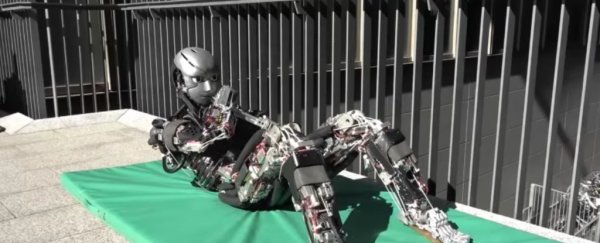Kenshiro and his younger "sibling" Kengoro are two robots that were built with unprecedented similarity to human anatomy at the University of Tokyo.
Their unique design make them able to move in ways looking closer to natural human movement than any preceding robot.
In fact, Kengoro's exercising ability likely rivals many human couch potatoes. The robot can do sit-ups, push-ups, and even stretches. However, the most surprising ability Kengoro exhibits is sweating.
The machinery that allows the robot to move like a human heats up, requiring water to circulate through its metal frame to cool it. Steam vents through holes in the skeleton to accomplish the cooling.

It's perhaps counter-intuitive that the engineers created the two cousin robots to be able to study human movements in greater detail.
But in the long term, these robots could be useful as crash-test dummies since their mobility could lead to more accurate readings than stationary dummies.
As the technology progresses even further into the future, Kengoro and Kenshiro could be the inspiration for actual search and rescue robots.
At this point, there is no telling where the advancement of the marriage between humanoid robotics and artificial intelligence will eventually land us.
We still seem to be quite far away from Westworld level AI and robots, where humans and robots are virtually indistinguishable.
Still, it does look like we are getting closer to the possibility. Think about the huge step forward it would be to merge the human-like movement of Kengoro with the nearly human-level intelligence of Hanson Robotics' Sophia, a feat that is likely more difficult than setting the two up on OkCupid.
Both technologies are growing at an increasingly rapid rate. The applications that such powerful tech will have on society is immeasurable but will definitely amount to more than a next-level tourist attraction.
Making robots look, move, and even think more like us could make what some consider the hard pill of artificial intelligence easier to swallow.
This article was originally published by Futurism. Read the original article.
